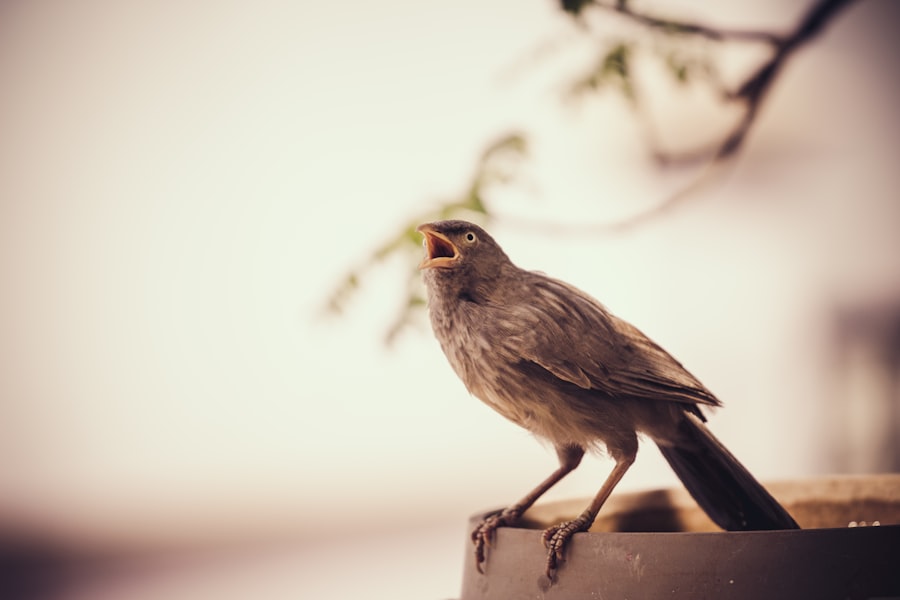To effectively manage your water consumption, it’s essential to first understand how much water you use on a daily basis. You might be surprised to learn that the average person consumes around 80 to 100 gallons of water each day. This figure includes everything from drinking and cooking to bathing and watering your garden.
By keeping track of your daily habits, you can gain insight into your overall water usage. Start by noting down the various activities that require water, such as showering, washing dishes, and doing laundry. This awareness will help you identify areas where you can cut back.
Additionally, consider the different fixtures and appliances in your home that contribute to your water consumption. Toilets, faucets, and showerheads can vary significantly in their water efficiency. For instance, older toilets may use up to 6 gallons per flush, while newer models can use as little as 1.28 gallons.
By understanding the specifics of your water usage, you can make informed decisions about which fixtures to upgrade or replace. This knowledge not only empowers you to save water but also helps you reduce your utility bills over time. Check out this video on how investors making money from water.
Key Takeaways
- Understanding your water usage is the first step to identifying potential areas for improvement.
- Identifying potential leaks in your home can help prevent water wastage and save money on your water bill.
- Checking your water meter regularly can help you monitor your water usage and detect any sudden increases that may indicate a leak.
- Monitoring your irrigation system for leaks and adjusting the schedule based on weather conditions can help conserve water.
- Assessing appliance efficiency and evaluating your lifestyle habits can help you identify opportunities to reduce water usage in your home.
Identifying Potential Leaks
Once you have a grasp on your water usage, the next step is to identify any potential leaks in your home. Leaks can be sneaky; they often go unnoticed until they result in a significant increase in your water bill. You may want to start by checking common culprits such as faucets, showerheads, and toilets.
A dripping faucet may seem trivial, but over time, those drops can add up to gallons of wasted water. If you notice any leaks, it’s crucial to address them promptly to prevent further waste. Another area to inspect is your irrigation system if you have one.
Sprinklers can develop leaks or become misaligned, leading to unnecessary water loss. Take the time to walk around your yard and observe your irrigation system in action. Look for wet spots or areas where water is pooling, as these could indicate a leak.
By being proactive about identifying and fixing leaks, you not only conserve water but also protect your home from potential damage caused by prolonged moisture exposure.
Checking Your Water Meter

Your water meter is a valuable tool for monitoring your consumption and identifying leaks. To get started, locate your water meter, which is typically found near the street or in a basement or crawl space. Once you’ve found it, take a reading at a time when no water is being used in your home—this will give you an accurate baseline.
After a few hours of no water usage, check the meter again. If the reading has changed, it’s likely that there’s a leak somewhere in your plumbing system. Regularly checking your water meter can also help you track changes in your usage over time.
By keeping a log of your readings, you can identify trends and make adjustments as needed. For example, if you notice a sudden spike in usage during a month when you haven’t changed your habits, it may be time to investigate further. This proactive approach not only helps you save water but also allows you to stay ahead of any potential plumbing issues.
Monitoring Your Irrigation System
| Metrics | Value |
|---|---|
| Water Flow Rate | 10 gallons per minute |
| Pressure | 40 pounds per square inch (psi) |
| Soil Moisture Level | 25% |
| Irrigation Schedule | Twice a week for 30 minutes |
If you have an irrigation system for your garden or lawn, it’s essential to monitor its efficiency regularly. Many homeowners underestimate the amount of water their irrigation systems use, leading to excessive consumption and higher bills. Start by assessing how often and how long you run your sprinklers.
A general rule of thumb is to aim for about one inch of water per week for most lawns. You can measure this by placing a small container in your yard while the sprinklers are running and checking how long it takes to fill it. Additionally, consider investing in smart irrigation technology that adjusts watering schedules based on weather conditions.
These systems can help you avoid overwatering during rainy periods and ensure that your plants receive the right amount of moisture when needed. By being mindful of your irrigation practices, you can significantly reduce your water usage while maintaining a healthy landscape.
Assessing Appliance Efficiency
Your household appliances play a significant role in your overall water consumption. Dishwashers and washing machines are two major contributors that can vary widely in their efficiency. If you’re using older models, they may consume more water than necessary for each cycle.
When shopping for new appliances, look for those with the ENERGY STAR label, which indicates they meet strict efficiency guidelines set by the Environmental Protection Agency. In addition to upgrading appliances, consider adjusting how you use them. For instance, only run your dishwasher or washing machine with full loads to maximize efficiency.
You might also explore alternative washing methods, such as hand-washing dishes when possible or using a clothesline instead of a dryer for laundry. By being mindful of both the appliances you choose and how you use them, you can make significant strides in reducing your water consumption.
Evaluating Your Lifestyle Habits

Your daily habits have a profound impact on your water usage. Take a moment to reflect on how you use water throughout the day. Simple changes can lead to substantial savings over time.
For example, consider taking shorter showers or turning off the tap while brushing your teeth. These small adjustments may seem insignificant individually but can add up to significant reductions in water consumption when practiced consistently. Another aspect to evaluate is how often you engage in activities that require large amounts of water, such as washing your car or filling up a pool.
If these activities are frequent, consider alternatives that use less water or find ways to minimize their frequency. For instance, using a bucket instead of a hose for car washing can save gallons of water while still getting the job done effectively.
Considering External Factors
While personal habits play a crucial role in water usage, external factors can also influence how much water you consume. Weather patterns, for instance, can significantly affect your irrigation needs. During dry spells or heatwaves, you may find yourself watering more frequently to keep your plants healthy.
Conversely, during rainy seasons, you might be able to cut back on irrigation altogether. Additionally, local regulations and community initiatives can impact how much water is available for use. Some areas have restrictions on watering during certain times or days to conserve resources during droughts.
Staying informed about these regulations not only helps you comply with local laws but also encourages responsible water usage within your community.
Exploring Water Rate Increases
Understanding the cost of water is another important aspect of managing your consumption effectively. Water rates can fluctuate based on various factors such as supply and demand, infrastructure costs, and environmental considerations. If you’ve noticed an increase in your water bill recently, it may be due to rising rates rather than an increase in usage.
Take the time to review your utility statements and familiarize yourself with how rates are structured in your area. Some utilities offer tiered pricing models where the cost per gallon increases as usage rises beyond certain thresholds.
Seeking Professional Help
If you’ve taken all the necessary steps but still find yourself struggling with high water bills or unexplained usage spikes, it may be time to seek professional help. A licensed plumber can conduct a thorough inspection of your plumbing system to identify any hidden leaks or inefficiencies that may be contributing to excessive consumption. Additionally, some municipalities offer free or low-cost home audits that assess water usage and provide recommendations for improvements.
These services can be invaluable in pinpointing issues that may not be immediately apparent and can help guide you toward effective solutions for reducing consumption.
Implementing Water-Saving Strategies
Once you’ve gathered all the information about your usage patterns and identified potential areas for improvement, it’s time to implement some effective water-saving strategies. Start by making small changes around the house—install low-flow showerheads and faucet aerators to reduce flow rates without sacrificing performance. You might also consider rainwater harvesting systems that collect rainwater for irrigation purposes or greywater systems that recycle wastewater from sinks and showers for non-potable uses like landscape irrigation.
These strategies not only conserve precious resources but also promote sustainability within your household.
Comparing Your Usage with Neighbors
Finally, one effective way to gauge your water usage is by comparing it with that of your neighbors. Many utility companies provide data on average household consumption within specific neighborhoods or communities. This information can help you understand where you stand relative to others and identify areas where you might improve.
If you find that you’re using significantly more water than average households nearby, it may be time to reassess your habits and make necessary changes. Conversely, if you’re already conserving effectively but still facing high bills due to external factors like rate increases or infrastructure issues, this knowledge can empower you to advocate for better practices within your community. By taking these steps—understanding your usage patterns, identifying leaks, monitoring appliances and irrigation systems, evaluating lifestyle habits, considering external factors, exploring rate increases, seeking professional help when needed, implementing strategies for conservation, and comparing with neighbors—you’ll be well on your way toward becoming a more responsible steward of this vital resource while enjoying the benefits of reduced bills and increased sustainability in your home.
If you’ve recently noticed a spike in your water bill, it could be due to a variety of factors, such as leaks, increased usage, or changes in rates. To better understand the potential reasons behind this sudden increase, you might find it helpful to read a related article that discusses common causes of high water bills. You can check it out here: Why is My Water Bill Suddenly So High?. This resource provides valuable insights that can help you identify and address the issue effectively.
WATCH THIS! Why Wall Street Is Exploding Your Water Bill
FAQs
Why is my water bill suddenly so high?
There are several potential reasons for a sudden increase in your water bill, including leaks, changes in water usage habits, and seasonal variations in water usage.
How can I determine if I have a water leak?
You can check for water leaks by monitoring your water meter for unusual activity, inspecting visible pipes and fixtures for leaks, and conducting a dye test in your toilet tank.
What should I do if I suspect a water leak?
If you suspect a water leak, it is important to promptly address the issue by repairing the leak or contacting a professional plumber for assistance.
Can changes in water usage habits affect my water bill?
Yes, changes in water usage habits, such as increased watering of outdoor plants or filling a swimming pool, can lead to higher water bills.
Are there any seasonal factors that can impact my water bill?
Seasonal factors, such as increased water usage for lawn irrigation during the summer months or additional water usage for holiday gatherings, can contribute to higher water bills.
